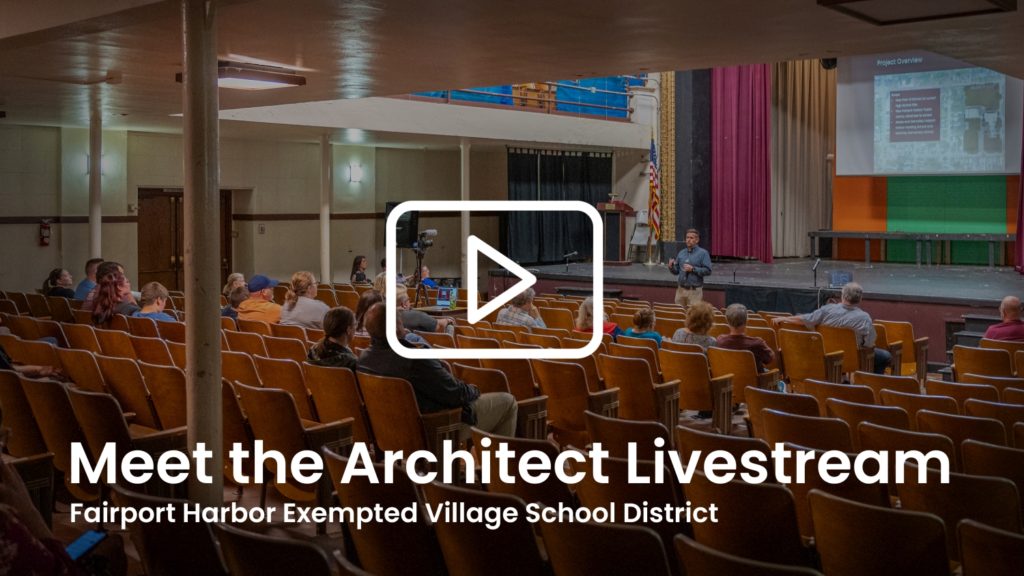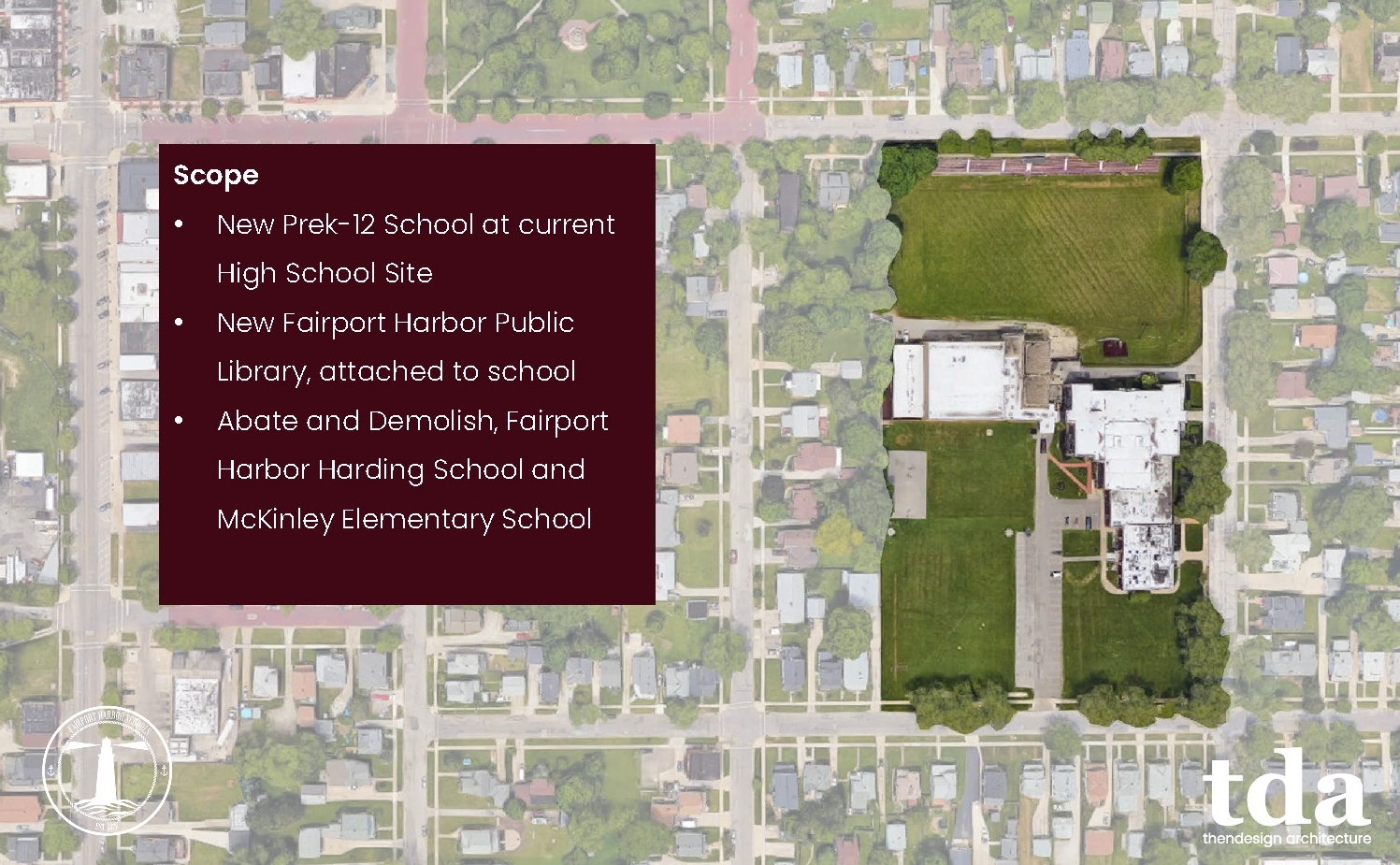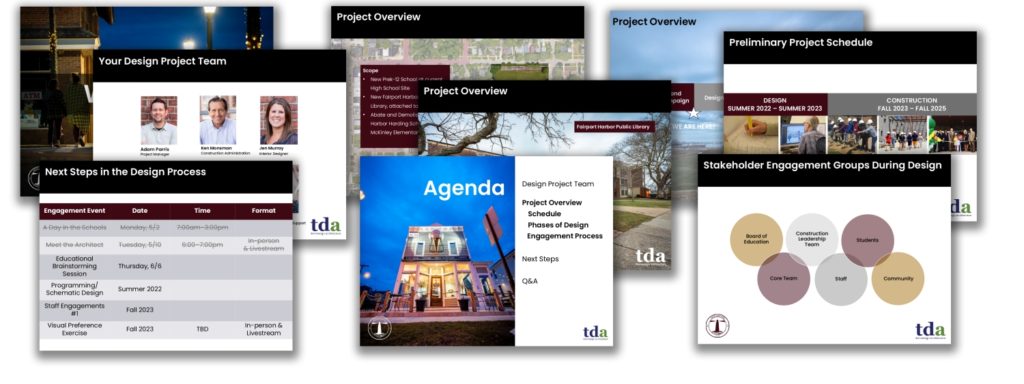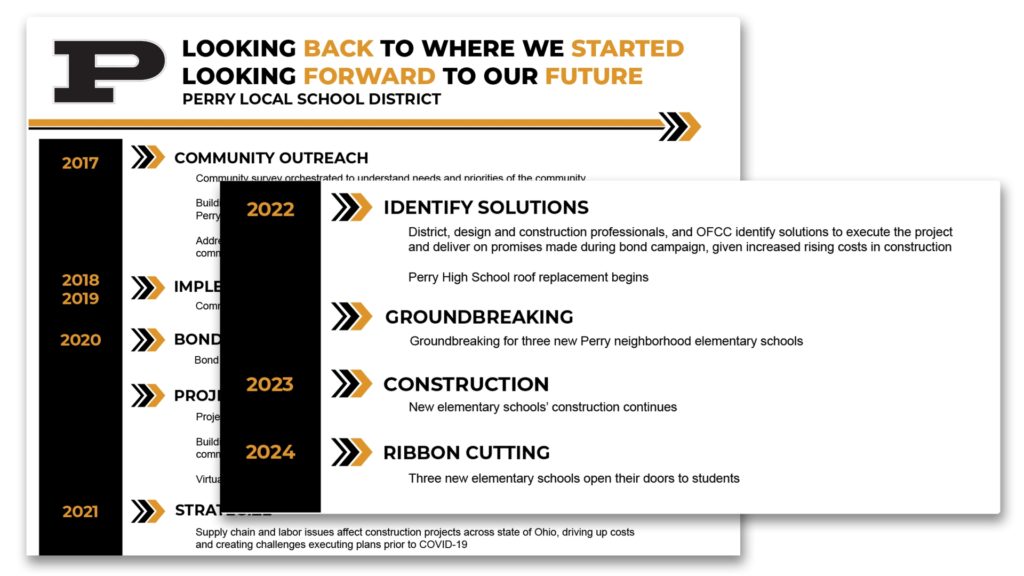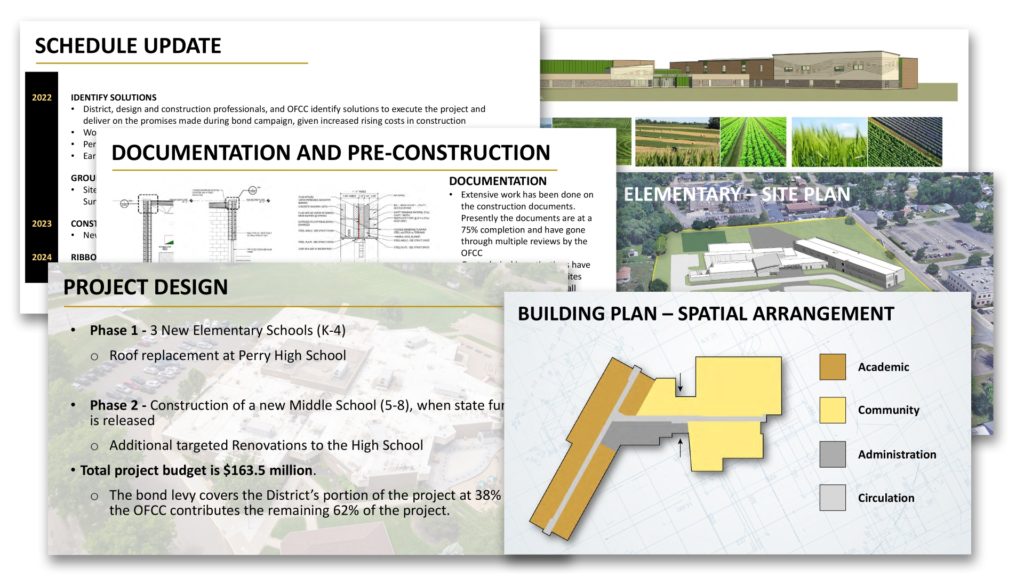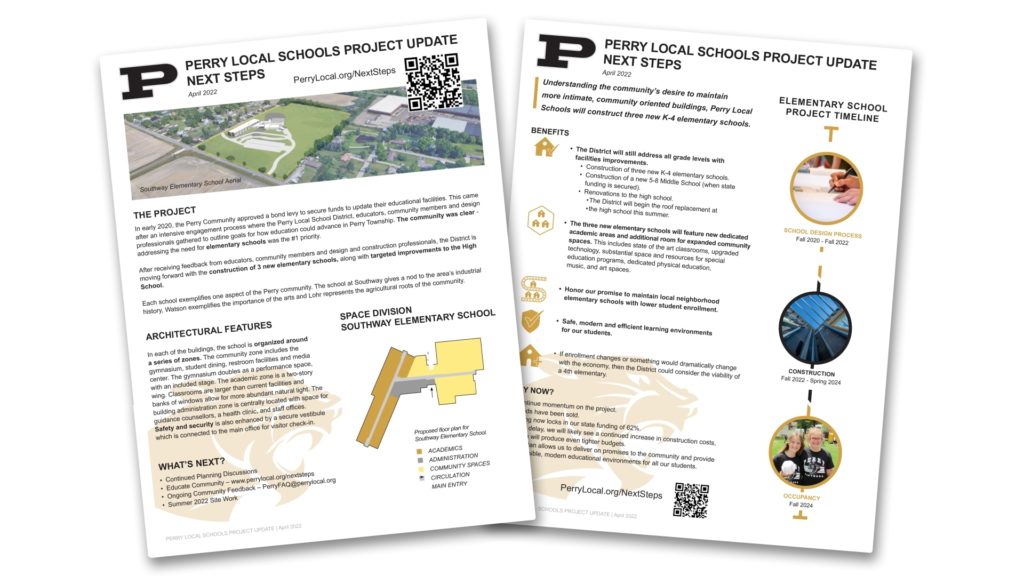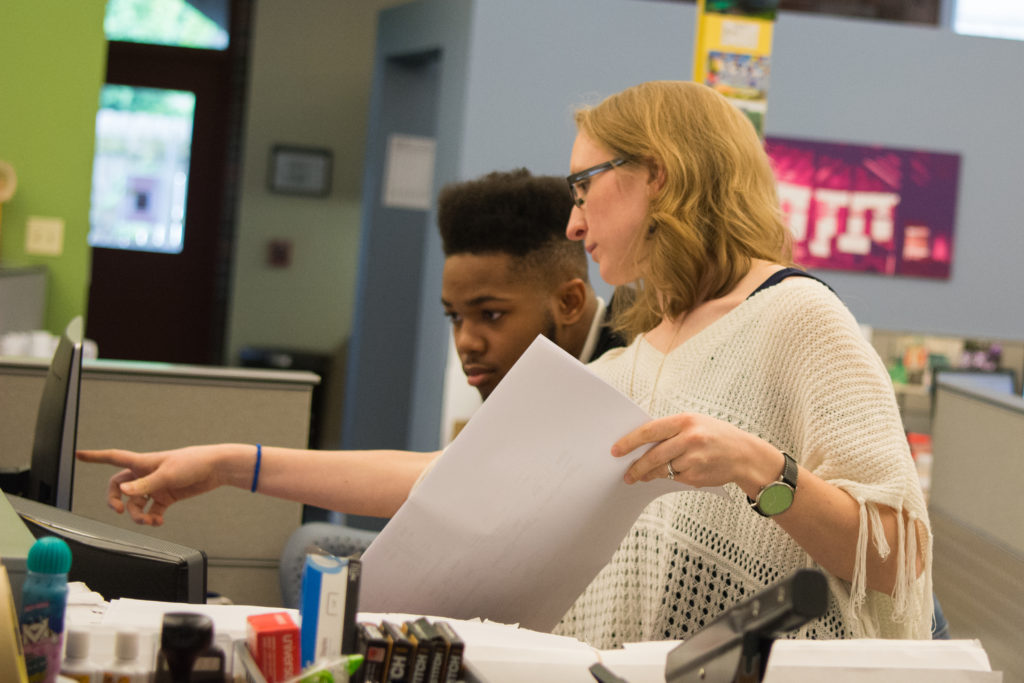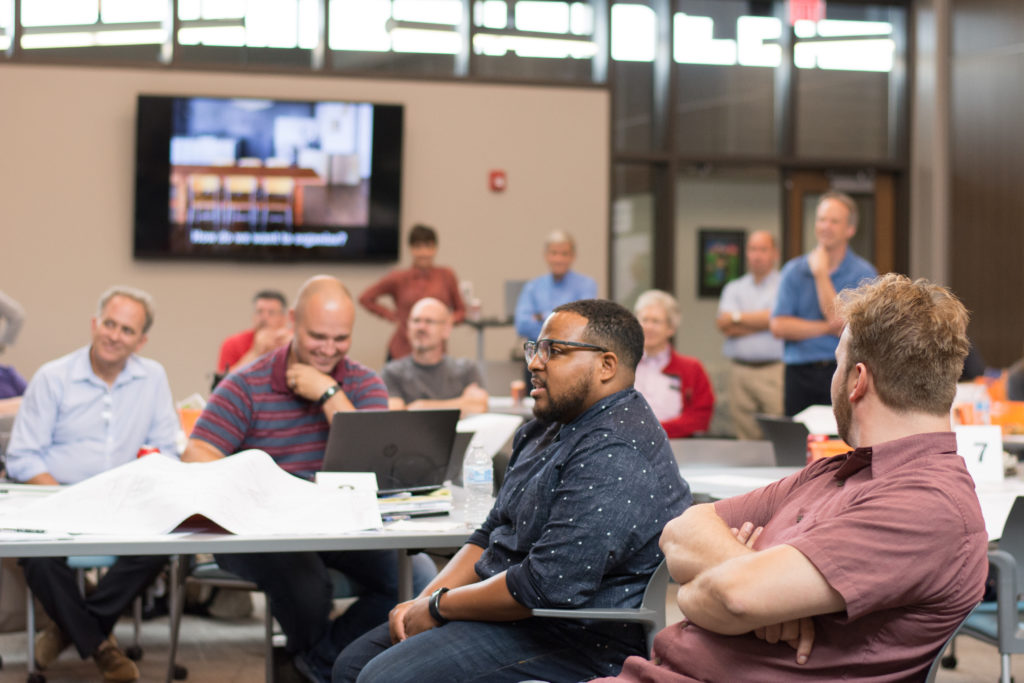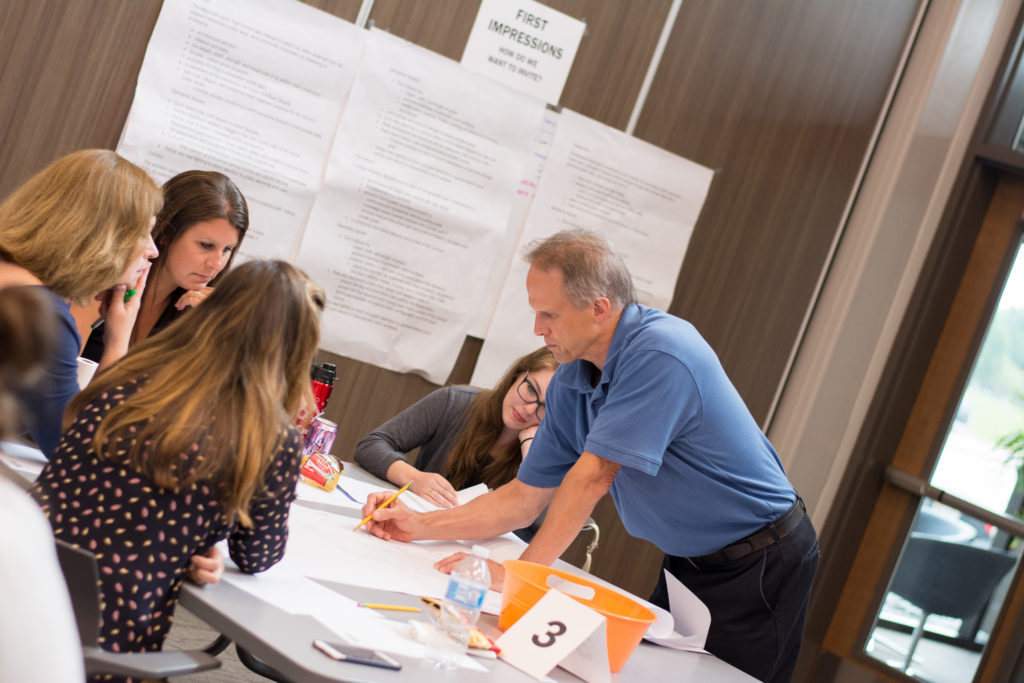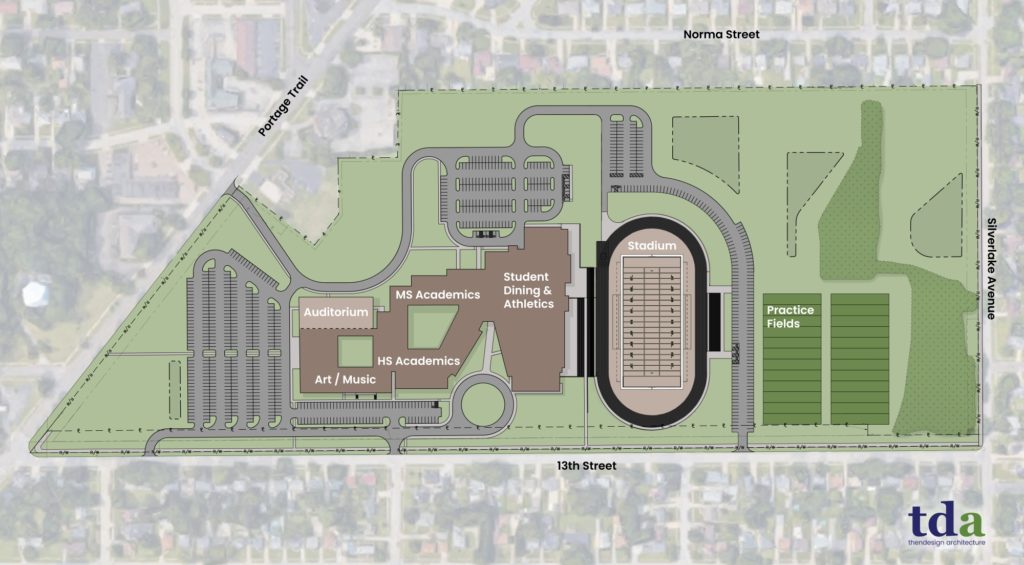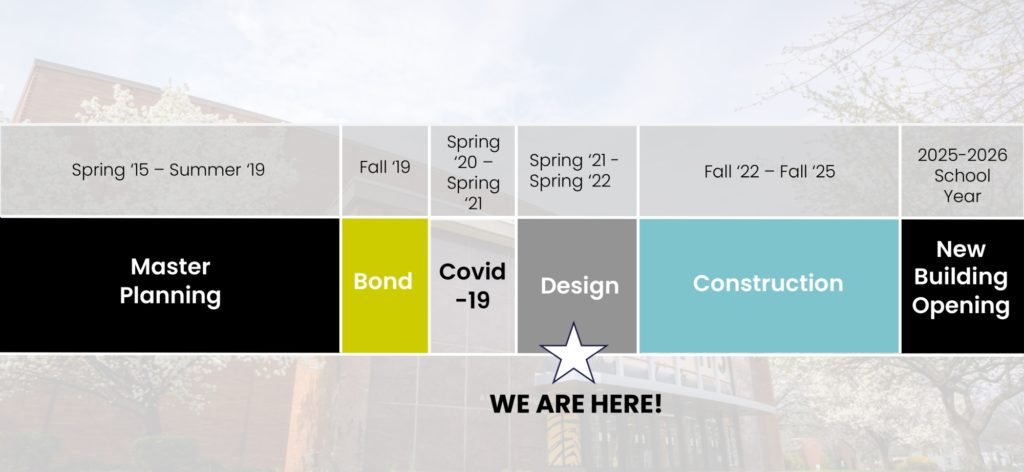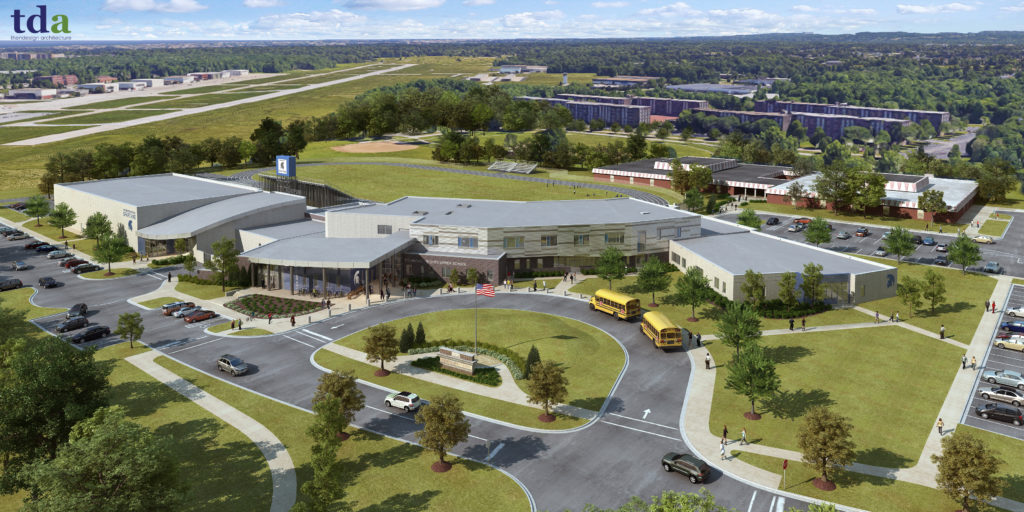Orange City Schools High School Renovation
Orange City Schools embarked on an ambitious renovation project to improve the safety, security, and accessibility of their high school, while also dramatically updating their athletic spaces. Construction for the $3.87-million-dollar project began in early 2022, was designed by ThenDesign Architecture and built by the Albert M. Higley Co. Spread across 15,000 sf, it incorporated a new secure vestibule at the school’s entrance and simultaneously redesigning several athletic spaces, some of which were built in the 1950’s, to create a modern athletic environment for students.
New spaces from the renovation include a professional training room, weightlifting space, a fitness and agility room, a collaboration and media space, and new locker rooms. The high school’s new entrance provides a greater presence at the front of the building and improves student entry and guest access.
“The new front entrance to Orange High School will provide a more secure and efficient entry for students, staff, and community members while giving the building a distinguished appearance,” said Dr. Lynn Campbell, Superintendent of Schools.
“The improvements to the athletic spaces will better serve our student-athletes of today and into the future. The much-needed redesign will modernize these outdated areas and make them more accessible.”
The full renovation project is scheduled to be completed for the 2022-2023 school year.
Renderings of the renovated spaces in Orange High School
Project History
“Over the last several years, other renovations and repairs took precedence in the high school.” commented Ted Roseberry, director of operations for Orange City Schools, “We replaced roof trusses in the media center, auditorium, commons, and indoor pool while also making significant upgrades to those learning areas to better accommodate students and staff.”
However in 2019 and 2020, after a pause during the Covid-19 pandemic, the District decided to move forward with this project.
Board president, Scott Bilsky remarked, “This project has been discussed for many years. It is our hope these facility upgrades will serve the needs of current and future Orange students for years to come. “
First built in 1924, the original Orange Schools building received renovations and additions over the years which ultimately led to the inclusion of an auditorium, varsity gymnasium, and other athletic areas in the 1950s. When the original building was replaced with the current high school in 1973, those areas were retained. One of the larger spaces being repurposed in this renovation is the girl’s locker room, built in 1957.
“It was like ‘walking back in time’ when you went into these areas of the building,” commented Roseberry. “The old locker room was large with a lot of wasted space, but now we can put all of it to good use.”
By providing a variety of new training spaces, the District hopes to improve the entire athletic experience.
“We will have a more professional environment and a clean, crisp-looking environment for our students, bringing them into the modern age,” said Dr. Campbell. “All team sports have something to gain from the new upgrades. We’ll have better-allocated space for our teams in all seasons. Hundreds of student-athletes will benefit from our facilities.”
The District is spending $3.87 million on the project, which they have been saving for renovations of this sort through the District’s Permanent Improvement fund.
The new secure vestibule at Orange High School showcases the school’s entrance. Since the building is wide, it has been difficult sometimes for visitors to identify the main entrance. The vestibule serves as a focal point for the building and provides a greater presence on the site. It is also easier to control access for students during the morning and evening. A separate guest entrance will be used during the school day for visitor sign-in.
Details of the new entrance, Locker Rooms and Media Room
Athletic Spaces
Students and staff can look forward to a variety of new spaces that will positively affect athletes in all sports.
Professional Training Room – Formerly the old girl’s locker room, the Professional Training Room will house equipment that promotes agility and cardiovascular exercise. It includes private restrooms, a trainer’s office, and clinic space.
Weight Room – The second half of the original girl’s locker room, construction professionals rerouted plumbing from existing showers and roof drains to create the new weight room. The space features clerestory lighting, that creates a clean, open environment, and will house a variety of weight racks and plates for weightlifting and strength training
Agility and Fitness Room – This double-height space, located near the competition gymnasium, features a variety of equipment all focused on improving athletes’ agility. It includes spaces for medicine balls, step ladders, chin-up bars, and weighted ropes. The purpose of the space is to improve athletes’ overall health and flexibility.
Locker Rooms – The school’s locker rooms are also being reprogrammed and refreshed. The new locker rooms will include coaches’ offices, showers, lockers, and small meeting space. Each locker room is adjacent to the competition gym and connected by a door that can be opened to create one space if necessary. It will also include equipment storage and access to the exterior.
Media Room – Created from a second-floor wrestling room, the school’s new Athletic Media Room provides open collaborative space for coaches and athletes and is equipped with technology for game reviews, and space to conduct team building exercises.
Details of the new Fitness and Agility Room, Professional Training Room and Weight Room
Orange City Schools - High School Renovation - A Better Student Experience
“Overall, the changes we are making to the high school will create a better experience for our visitors and athletes,” comments Dr. Campbell. “We could have made these improvements years ago, but the time wasn’t right. Now, we can look forward to seeing our students benefiting from an enhanced athletic experience, not just in the gym, or for organized sports but for all students to strength train and improve their physical health.”
As for the school’s new entrance, a streamlined secure experience will be welcomed by the administration. Roseberry concludes, “I have worked on many school improvement projects during my career, some of which were large projects, but sometimes they were small projects. These smaller improvements make a huge difference, especially when they benefit student security.”
The District looks forward to putting the new spaces to use in the 2022-2023 school year. They will be open to all students to benefit the whole student body.
To view more information and updated imagery on the construction process, visit the District’s website.

Ryan Caswell
Communications
Get our newsletter with insights, events and tips.
Recent Posts:
Perry High School Unveils a State-of-the-Art Welding Lab
ThenDesign Architecture Celebrated its 35th Anniversary
Capital Improvement Plans Work
Rocky River’s Transformative Renovation
Cuyahoga Falls 6-12 Campus Construction Tour


